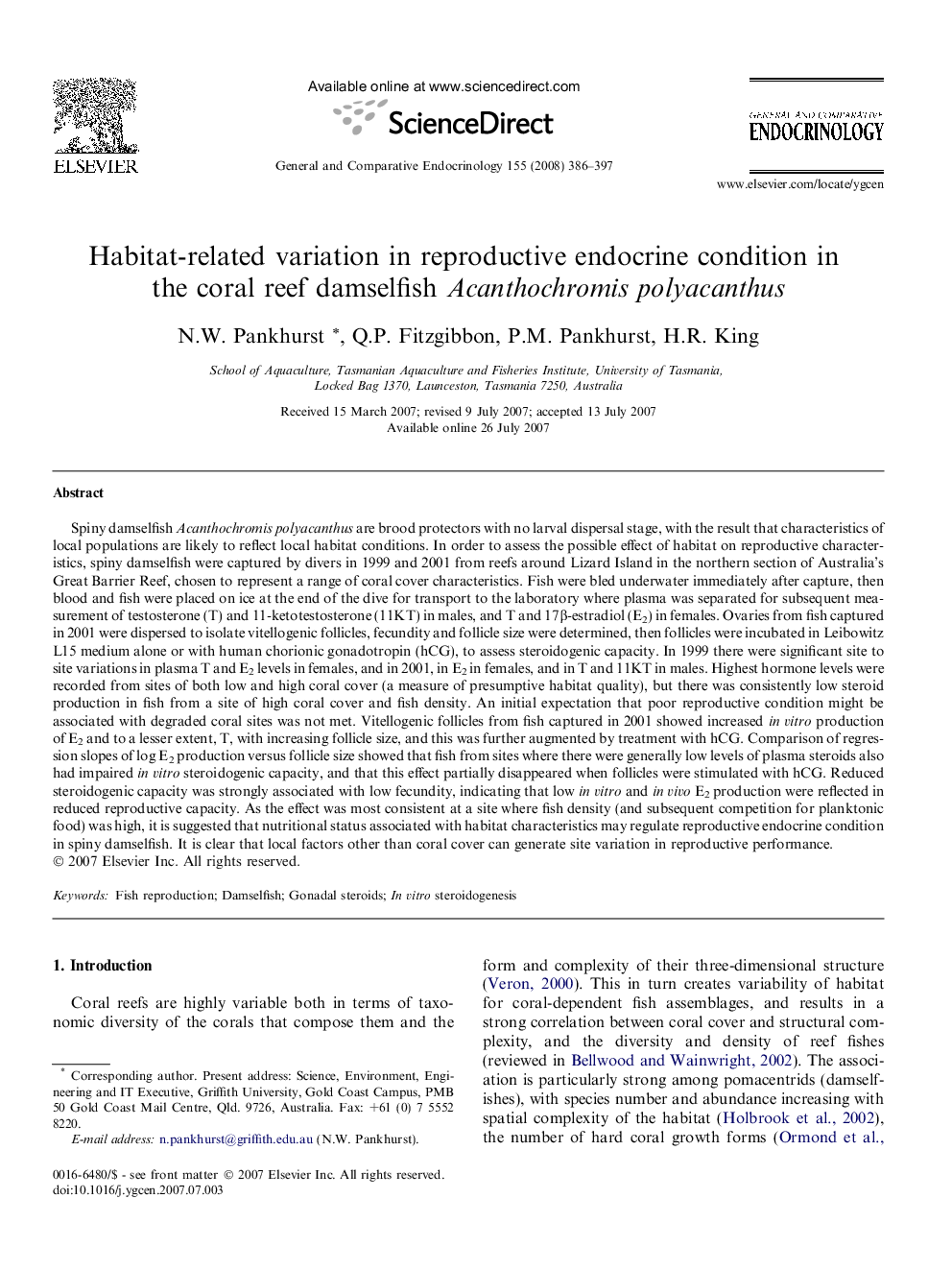| Article ID | Journal | Published Year | Pages | File Type |
|---|---|---|---|---|
| 2802115 | General and Comparative Endocrinology | 2008 | 12 Pages |
Spiny damselfish Acanthochromis polyacanthus are brood protectors with no larval dispersal stage, with the result that characteristics of local populations are likely to reflect local habitat conditions. In order to assess the possible effect of habitat on reproductive characteristics, spiny damselfish were captured by divers in 1999 and 2001 from reefs around Lizard Island in the northern section of Australia’s Great Barrier Reef, chosen to represent a range of coral cover characteristics. Fish were bled underwater immediately after capture, then blood and fish were placed on ice at the end of the dive for transport to the laboratory where plasma was separated for subsequent measurement of testosterone (T) and 11-ketotestosterone (11KT) in males, and T and 17β-estradiol (E2) in females. Ovaries from fish captured in 2001 were dispersed to isolate vitellogenic follicles, fecundity and follicle size were determined, then follicles were incubated in Leibowitz L15 medium alone or with human chorionic gonadotropin (hCG), to assess steroidogenic capacity. In 1999 there were significant site to site variations in plasma T and E2 levels in females, and in 2001, in E2 in females, and in T and 11KT in males. Highest hormone levels were recorded from sites of both low and high coral cover (a measure of presumptive habitat quality), but there was consistently low steroid production in fish from a site of high coral cover and fish density. An initial expectation that poor reproductive condition might be associated with degraded coral sites was not met. Vitellogenic follicles from fish captured in 2001 showed increased in vitro production of E2 and to a lesser extent, T, with increasing follicle size, and this was further augmented by treatment with hCG. Comparison of regression slopes of log E2 production versus follicle size showed that fish from sites where there were generally low levels of plasma steroids also had impaired in vitro steroidogenic capacity, and that this effect partially disappeared when follicles were stimulated with hCG. Reduced steroidogenic capacity was strongly associated with low fecundity, indicating that low in vitro and in vivo E2 production were reflected in reduced reproductive capacity. As the effect was most consistent at a site where fish density (and subsequent competition for planktonic food) was high, it is suggested that nutritional status associated with habitat characteristics may regulate reproductive endocrine condition in spiny damselfish. It is clear that local factors other than coral cover can generate site variation in reproductive performance.
